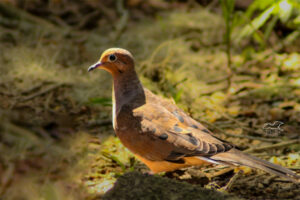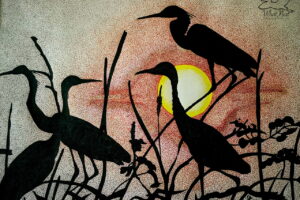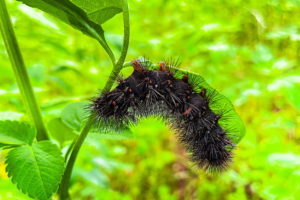Beautiful & Helpful: The Mabel Orchard Orb Weaver

Colors & Black & White
When I was in college, I was lucky enough to get to spend some time in Queensland, Australia. When I was there I met lots of really great people but I became especially friendly with one family who had the coolest house. It was build around a central outside courtyard, and any room in the house, even the bathrooms, could be accessed from the courtyard. The rooms were build in a way that allowed lots of cross breezes, so the windows and doors into the courtyard were kept open most of the time. It was very comfortable except for one small problem. The open courtyard allowed bugs to get into the house easily. One evening, while we were eating dinner, a small spider came sliding down a strand of spider silk, and almost landed in my plate. It was totally unexpected, and I jumped (and probably screamed), and started swinging at it.

My friend jumped up and grabbed my hand, so that I would not harm the spider. Then his wife gently scooped it up on a paper towel and took it out to the courtyard. When she came back, she could see the questioning look on my face, so they explained to me…

The spider that tried to land in my dinner was an orb weaver spider. They explained that orb weavers are docile spiders and don’t usually bite at all, but if one does bite you, they are not poisonous and won’t even cause an itchy bump. My friends actually allowed the spiders to live inside their house and just occasionally swept down unused webs!!! Why, you probably ask. Well, because orb weavers can eat many hundred times their body weight in flies, gnats, mosquitoes and other pest insects. They were actually an integral part of my friend’s pest control program. Once he explained that it made perfect sense to me. I still don’t let spiders live in my house on purpose, but now instead of killing them, I just put them outside.

The spider I met in Australia was not the same species as the ones here in Florida, but it was closely related to the little gem here in these photos. This spider is a Mabel orchard orb weaver, and is found in the southern United States in moist areas, woods, gardens, and sheds. Like the orb weaver in Queensland, it is docile and harmless, but eats loads of pests. The top of the abdomen is whitish, usually with some striping and stippling, while the bottom is dark green with several bright orange spots. Because of those spots, people sometimes mistake them for black widows, but orb weavers are much smaller, more brightly colored, and more thinly built than black widows. So if you see an orb weaver, leave it alone if you can or move it outside if you must. It’s a good spider. Good, good spider!




Recent Comments